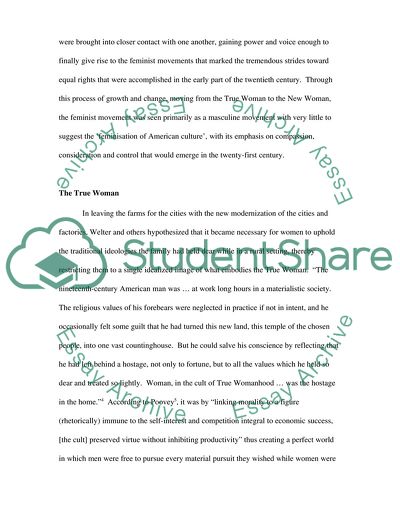Cite this document
(“Victorian America Essay Example | Topics and Well Written Essays - 4500 words”, n.d.)
Retrieved from https://studentshare.org/history/1536560-victorian-america-choose-only-one-q1did-victorian-america-see-the-feminisation-of-american-culture-or-q2-historians-have-often-labelled-the-post-civil-w
Retrieved from https://studentshare.org/history/1536560-victorian-america-choose-only-one-q1did-victorian-america-see-the-feminisation-of-american-culture-or-q2-historians-have-often-labelled-the-post-civil-w
(Victorian America Essay Example | Topics and Well Written Essays - 4500 Words)
https://studentshare.org/history/1536560-victorian-america-choose-only-one-q1did-victorian-america-see-the-feminisation-of-american-culture-or-q2-historians-have-often-labelled-the-post-civil-w.
https://studentshare.org/history/1536560-victorian-america-choose-only-one-q1did-victorian-america-see-the-feminisation-of-american-culture-or-q2-historians-have-often-labelled-the-post-civil-w.
“Victorian America Essay Example | Topics and Well Written Essays - 4500 Words”, n.d. https://studentshare.org/history/1536560-victorian-america-choose-only-one-q1did-victorian-america-see-the-feminisation-of-american-culture-or-q2-historians-have-often-labelled-the-post-civil-w.


